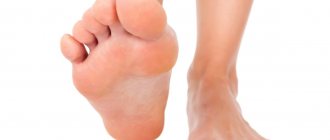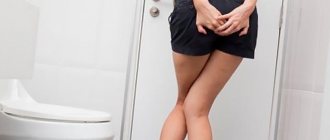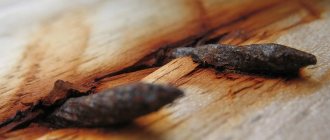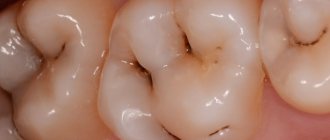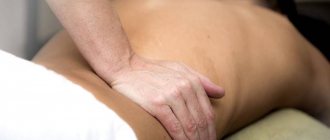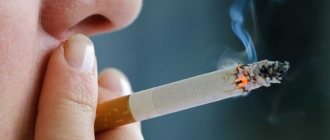Cracked heels causes and treatment
When walking, not only bone and joint formations, but also the covering of the foot are subjected to increased stress.
During movement, the skin stretches and contracts, deforming its own cells. The lateral surfaces of the heel, where the greatest tension is created, are subject to particular changes. When hyperkeratosis joins these processes, the stratum corneum thickens significantly. Moreover, as the size increases, its elasticity is lost, and accordingly, under normal loads, the skin begins to crack and burst.
So, what causes cracked heels? Here are the TOP 7 main reasons in adults:
- Fungus. Mycosis of the feet is one of the most common ailments. A high risk of infection occurs among those who visit public beaches, swimming pools, and showers without shoes. Spores are well preserved in a humid environment. Very often, fungus develops in people with an active lifestyle; this is constant sweating of the feet. Since overheating almost doubles the likelihood of developing the disease. In addition to cracks, dermatophytosis is manifested by itching, burning, and deformation of the nails.
- Diabetes. With “diabetic foot” the changes are characterized by the absence of pain. Glucose not only disrupts tissue trophism, but also affects nerve fibers, changing sensitivity. Regular deterioration of blood supply leads to changes in the skin of the legs. After all, blood supplies not only oxygen, but also all nutrients. Diabetes can also manifest itself as dry skin, the formation of ulcers, abrasions, and deep cracks. Possible foot deformity - hammertoes or hooked toes.
- Hypovitaminosis. Insufficiency of vitamins A (retinol), E, and the trace element zinc can lead to excessive dryness, decreased elasticity, and degenerative changes.
- Anemia. Iron deficiency not only affects the oxygen supply to tissues. The microelement is also found in tissues, taking part in the formation of proteins and enzymes. If it becomes insufficient in the body, the division and structure of cells is disrupted, leading to dystrophic changes. Epidermal cells, which are renewed quite often, are most susceptible to negative influence. Skin manifestations of iron deficiency anemia include.
- Problems with the spine. Often, radicular symptoms disrupt the innervation of the lower extremities. Almost the entire process suffers, which makes the skin on the legs thin, vulnerable, and with poorly healing wounds. Typically, such problems begin with prolonged compression of the root, especially with compression of several formations.
- Skin diseases - ichthyosis, psoriasis, plantar keratoderma. The most extensive factor that changes the skin on the heels. With dermatoses, the skin dries out, becomes susceptible to external influences, and becomes inflamed. Any impact can provoke microtrauma, which subsequently develops deep skin damage - a crack. Moreover, they often become gateways for secondary infection, which only aggravates the problem.
7) External factors. Usually these are “provocateurs” of problems, which, with constant exposure, can cause damage to the integrity of the skin of the heels.
What can cause cracks:
- Obesity – excess weight significantly increases pressure on the foot. In addition, this condition is often accompanied by metabolic disorders, which also negatively affects the skin.
- Tight, uncomfortable shoes – incorrect selection of shoes can result in increased, uneven load. Moreover, not only excessively narrow shoes are dangerous, but also worn-out heels and worn-out pairs. In the latter, the leg is not fixed, so when walking it constantly rubs, which provokes roughness and other “joys”.
- Deformation of the feet - flat feet, hallux valgus, clubfoot - also lead to a redistribution of the load and, over time, provoke the appearance of calluses, corns, and hyperkeratosis.
- Standing work or prolonged stay “on your feet” - in such cases, increased pressure is observed almost every day, the skin cannot cope with the resulting microtraumas, triggering increased reproduction of cells of the stratum corneum, and the old ones, due to active growth, do not have time to exfoliate, leading to roughness and dryness , and subsequently – to cracks.
For a more detailed analysis of why heel damage occurs, we will consider each of the reasons separately.
| Conditions that do not require treatment | External exacerbating factors | Pathological conditions |
|
|
|
- One of the most common causes of severe dryness is skin dehydration. The feet are a part of the body that we often do not pamper with hydration, although it is the heels that bear a huge load when walking. Due to insufficient hydration, the skin on the heels becomes rough, changes color and, as a result, cracks appear, which cause great discomfort. It is extremely important to keep the skin of your feet moisturized in the summer, when our skin suffers from hot and dry air, as well as in the winter, when we constantly wear closed shoes.
- Improperly chosen shoes cause calluses to appear on the feet and heels in areas of maximum friction, which leads to roughening of the skin. Often, blisters appear when you walk for too long, which is why it is so important to have comfortable shoes. Speaking about shoes, it should be noted that it is better to give preference to socks and tights made from natural materials, since synthetics injure the skin and cause various skin reactions.
- Vitamin deficiency can also cause dry skin on the feet and heels. Long-term, poor nutrition directly affects the condition and hydration of our skin, so it is extremely important to monitor nutrition, especially in the autumn-winter period. If cracked heels appear, analyze your diet and try to diversify it as much as possible.
- Skin dehydration can also occur due to improper care. Neglecting regular hygiene care can lead to the development of cracked heels. It is extremely important to maintain hygiene - wash and moisturize your feet daily, and do not forget about a pedicure. But you shouldn’t be too zealous when doing a pedicure. There is no need to scrub your heels too much or cut off the deep layer of rough skin; such excessive exfoliation can only lead to worsening of the skin condition. It is also important to choose a good moisturizing cream that will not dry out the skin and cause allergies.
- Various fungal diseases, such as mycosis, should not be overlooked. In this case, it makes no sense to self-medicate; you should contact a dermatologist, who, after making a diagnosis, will select the correct treatment.
- If there are no obvious reasons for the appearance of this problem, then it is quite possible that they may be caused by certain diseases. So, often, diseases of the endocrine system lead to skin problems. The same applies to gastrointestinal diseases. In this case, self-medication will not help, and may even worsen the situation, so consulting a doctor is necessary. After passing the necessary tests, the doctor will be able to determine the course of treatment that will need to be followed.
The main reason for the development of dryness and cracks in the skin of the foot is hyperkeratosis - thickening of one of the layers of the epidermis with its coarsening. To understand the processes a little, let’s give a short introduction to histology. The skin on our heels is thick and consists of 5 layers:
- Basal
- Spiky
- Grainy
- Brilliant
- Horny.
Hyperkeratosis affects the outermost layer (the stratum corneum). It has the densest structure and the greatest thickness. The main component is keratinocytes, which are combined into scales connected to each other by special cement. Normally, this structure provides maximum waterproofness and protection.
Under the influence of internal or external factors, the stratum corneum begins to divide excessively to neutralize trauma.
There’s no time to do it, but soon the skin will start to burst
When walking, not only bone and joint formations, but also the covering of the foot are subjected to increased stress. During movement, the skin stretches and contracts, deforming its own cells. The lateral surfaces of the heel, where the greatest tension is created, are subject to particular changes. When hyperkeratosis joins these processes, the stratum corneum thickens significantly. Moreover, as the size increases, its elasticity is lost, and accordingly, under normal loads, the skin begins to crack and burst.
The main causes of cracked heels:
- Fungus.
- Diabetes.
- Hypovitaminosis.
- Anemia.
- Problems with the spine.
- Skin diseases - ichthyosis, psoriasis, palmar-plantar keratoderma.
- External factors
Mycosis of the feet is one of the most common ailments. A high risk of infection occurs among those who visit public beaches, swimming pools, and showers without shoes. Spores are well preserved in a humid environment. Very often, fungus develops in people with an active lifestyle; this is constant sweating of the feet. Since overheating almost doubles the likelihood of developing the disease.
In addition to cracks, dermatophytosis is manifested by itching, burning, and deformation of the nails.
Diabetes
With “abetic foot,” the changes are characterized by the absence of pain. Glucose not only disrupts tissue trophism, but also affects nerve fibers, changing sensitivity.
Ointments for treating cracked heels - full review
- cracking on the skin of the foot of varying depths
- itching, burning, pain and discomfort when walking and at rest
- sometimes – unpleasant smell from feet
The multiple causes of cracked heels often complicate diagnosis, and patients receive only symptomatic treatment. As a result, manifestations that have subsided for a while make themselves known with renewed vigor, the patient’s quality of life sharply decreases, and the risk of infectious complications increases. For effective treatment, it is important to eliminate all the causes of cracked heels, of which one patient may have several.
Not everyone prefers store-bought medications and wonders how to treat cracked heels with folk remedies. There are many methods and recipes for home therapy for this problem. We have selected the simplest and most effective ones.
Foot baths
The baths are designed for steaming the stratum corneum. This will make the skin more responsive to procedures to remove roughened dermis. This therapy is very pleasant and gives a lot of pleasure.
However, like any other methods, it has contraindications:
- wounds, skin damage;
- allergy;
- individual intolerance;
- the first day after the pedicure.
Making baths is very simple. Water at a comfortable temperature is poured into the basin, and agents are added, depending on the type of therapy. Then the legs are lowered into the basin and steamed for 10–15 minutes.
For medicinal purposes, baths are done daily. Then - once a week to maintain the result.
Additives for baths in the ratio of 2 liters of water:
- peat oxidate;
- milk starch 2 tbsp;
- hot whey;
- 2 tbsp. soda a little liquid soap;
- 30 grams of starch;
- about 1 liter of chamomile or calendula decoction;
- herbal mixture of St. John's wort and nettle.
To soften the skin, regular bath salts, which are sold in any cosmetics store, are also suitable.
Compresses and masks
Compresses and masks are applied after baths or after showers. As part of the course of therapy, procedures are performed daily, and then 1–2 times a week.
There are 10 basic recipes:
- A mixture of glycerin and apple cider vinegar (2:1).
- 100 gr. mix flour with 1 tbsp. l. vegetable oil and 30 gr. melted honey. The mask is applied at night, and socks are put on top.
- Curd compress from one ingredient.
- A mixture of any cosmetic oils. Squeezes made from olives, grape seeds, corn and jojoba are best suited.
- Vitamin E capsules.
- Butter.
- A mixture of grated apple, beer and butter. For one fruit you need 100 ml of beer and 2 tbsp. l. oils
- A mixture of ammonia 10% and glycerin (1:1).
- Medical bile.
- Chopped celery and butter (1:1).
It is recommended to wear natural cotton socks over the compresses to allow the skin to breathe.
You can make your own creamy products.
Recipe 1. Ingredients:
- badger fat;
- decoction of celandine and calendula.
Preparation:
- The fat is heated in a water bath.
- The finished broth is poured into heated badger fat.
- The ingredients are mixed together.
After the mixture has cooled, apply it to the affected areas. The ointment should be warmed before each use.
Recipe 2. Ingredients:
- vinegar 9% - 50 ml;
- glycerin – 50 ml.
The components are mixed together and applied to the heels before bed. Cotton socks are worn on top.
Recipe 3.Ingredients:
- petrolatum;
- a mixture of dried herbs calendula and plantain.
The ratio of Vaseline and herbs is 1 to 10. The components are mixed together, and the finished mixture is applied to the skin of the feet.
You can add 1-2 drops of essential oil to ready-made homemade ointments for the best effect.
Nowadays there are many products available in pharmacies. Which, with regular use, can restore smoothness to our legs and relieve painful cracks. In the initial stages, when there is only engorgement of the skin and minor damage, it can be removed using pumice or special grinding files after preliminary hot baths with soda and salt.
After removing the “extra”, the legs should be smeared with any thick, greasy cream (children’s cream from Soviet times with cats and dogs from the Svoboda factory works well) or Vaseline oil. After this, put on clean cotton socks. All manipulations are carried out before bedtime.
If the problems are more serious, then it is advisable to use special pharmaceutical ointments
| Name | How it works | How to use |
| Ambulance | Promotes accelerated healing and also has a bactericidal effect. In addition, the cream nourishes and moisturizes the skin well. | Apply 2 times a day, applying with massage movements. |
| Zazhivin | Thanks to the tea tree oil included in the composition, the ointment has a disinfecting effect. Also, oils and plant extracts speed up recovery. | Apply before bed on pre-washed feet. |
| Bioastin | It has an antifungal effect (but only as a prophylactic), softens the skin and accelerates healing. | One-time use on clean skin of the heels. |
| Dardia lipo | The composition includes urea. It perfectly moisturizes and softens the skin. Paraffin and wax create a protective film, protecting against damage. | Apply 2 times a day |
| Radevid | Cream containing vitamins A, E, D, glycerin. Activates regeneration and also accelerates recovery. | Used 2 times a day after treating the skin with an antiseptic (furacilin, salicylic acid) |
Baths with medicinal herbs soften the skin of the heels well: decoctions of sage, chamomile, string, oak bark. You can add sea or table salt to the water in the form of a hypertonic solution. Salt perfectly heals deep infected rashes.
Oil compresses (sunflower, olive) and lotions made from boiled potatoes and aloe leaves also have a good effect. They are applied to the fabric and applied to the damage. After that, wrap your feet loosely with a bandage. And put on socks on top.
Treatments at home that ladies use effectively in different situations are collected here.
Daily care for your heels to keep them smooth (prevention)
To keep your heels happy, they need constant care. And, of course, the right one.
Regular care routines should include:
- Wash daily with not too hot water, moisturizing or greasy soap.
- The use of bactericidal agents when washing (in case of excessive sweating).
- Rinse your feet with cool water after washing.
- Apply nourishing cream or oil to clean, dry feet.
- Carrying out deep cleaning of the feet using pumice. It is carried out once a week after steaming in a bath with the addition of soda or a decoction of herbs.
- Regular use of nourishing foot masks.
Do not forget about the harmful effects of ultraviolet radiation and hot sand on the skin of the feet. It is advisable to apply nourishing cream before going out into the sun and not walk on a hot surface without shoes.
Heel hygiene is the key to healthy skin
Personal hygiene is an essential factor for healthy foot skin. When visiting public places (saunas, gyms, solariums), be sure to protect your skin with antifungal drugs and use separate shoes.
If the pedicure procedure does not cause difficulties, you can do it yourself. Or get a pedicure only in a trusted salon that provides high-quality treatment of instruments.
In order not to encounter such a problem as burst heels, not to look for reasons, and not to engage in treatment either at home or in a medical office, special attention should be paid to the choice of shoes.
The most likely shoes to cause cracks are high-heeled shoes, which are uncomfortable for the foot, especially if the shoe size does not allow the foot to feel comfortable. This also includes shoes made of synthetic materials that create a greenhouse effect and promote the proliferation of pathogenic organisms.
Another element in the prevention of cracks is a sufficient supply of fluid, vitamins and minerals. The diet should include foods that promote smoothness, elasticity and restoration of the skin: liver, various nuts, carrots, rose hips.
Prevention is easier than treating a disease. Basic precautions and proper nutrition can eliminate infection and deformation of the skin of the feet, so that you can enjoy smooth and beautiful heels all year round.
Deep cracks in the heels: causes and treatment
If cracks develop on the skin of the foot, to provide first aid to yourself, you should take the following measures, which will give an excellent result in just 2 weeks:
- Buy Glue BF 6 (60-80 rubles) at the pharmacy, don’t be surprised, it is approved by dermatologists and recommended for use in this pathology. Apply a few drops to the clean skin of the crack along its entire length, wait until the glue dries. This is necessary so that the wound heals and does not deepen; in 5 days the crack will heal and the glue will be removed along with the keratinized layer of skin.
- Then you don’t need to do anything for 7 days. Afterwards, you should take baths in warm water and slowly, not at once, but gradually cleanse the foot of keratinized tissue.
- Immediately after the bath, apply creams with salicylic, lactic, and glycolic acid. You can use Zorka (veterinary) cream, which contains floralizin; this is a very effective remedy for cracks in the skin. Use moisturizers in the evening and during the day.
- The condition of the skin, including the skin of the legs, can be improved by consuming 1 tbsp orally on an empty stomach. spoons of olive oil, but it should be borne in mind that this method is not suitable for everyone, for example, it is contraindicated for people with gallstones (the oil has a choleretic effect).
If small manifestations of dryness do not cause severe discomfort, then deep cracks in the heels cause not only aesthetic discomfort. Dust and dirt getting on your skin and lack of proper care can lead to serious problems. If your version is not the most advanced, then you can solve this problem yourself.
If you have a more serious problem with your heels, then cosmetic care alone will not do. Drug treatment will help solve this problem. This cannot be done without a doctor’s prescription, who will help you choose the right medications.
Very often, drug treatment consists of selecting special ointments that are applied to the skin of the heels and have antiphlogistic and healing properties. Such ointments should be used in conjunction with normal hygiene procedures. If the rough skin is caused by a fungus, the doctor will prescribe antifungal drugs such as fluconazole, ketoconazole.
TOP 3 medications
This category contains products for external use. They are classified as medications, so they should be used if indicated.
- Levomekol. This ointment should be used if the cracks are bleeding. It has antibacterial properties and serves as a preventative against infection and inflammation. Apply a thin layer of 3 rubles to the affected area. in a day.
- Nizoral. This ointment is suitable for use if there is a fungus on the skin, seborrheic dermatitis, and it is they that provoked cracks in the skin. Apply 1 r. to cracks and the entire surface of the foot. in a day.
- Rescuer. This universal ointment has a complex effect: softens, triggers skin regeneration processes, nourishes, relieves inflammation, and has an antiseptic effect. Suitable for use in advanced cases. How to treat deep cracks in the heels: apply 1-2 rubles to the damaged area. in a day.
Quick help: how to heal cracked heels quickly and effectively
If you do not want to do treatment at home, then you can go to a beauty salon, where you will undergo a special procedure to remove excess skin from your heels. During this procedure, the rough skin of the dermis will be carefully removed and the edges of the wounds will be treated. It is quite possible that you will need more than one such procedure.
If you decide to do treatment at home, the procedure should look like this:
- Softening the skin with a bath or compress
- Gently removing excess skin
- Applying a healing or softening cream
You will have to repeat such manipulations several times. Don't forget to lubricate your feet with plenty of cream at night and wear cotton socks.
Rapid healing of the skin of the feet is also possible with the use of special ointments that are anti-inflammatory in nature. Such ointments are relevant if the cracks have burst and the inflammatory process has begun.
Videos about cracked heels. How to treat burst skin at home
If your heel bursts, the causes and treatment at home become very pressing issues. Cracks can not only cause discomfort and severe pain.
Such a violation of the skin, if not treated in a timely manner, can lead to suppuration, inflammatory processes and infection of the skin. It is advisable to carry out the therapy comprehensively, including using products for the prevention of fungal and bacterial skin lesions.
Dryness and cracks may be minor, but this is not a reason to ignore them.
When a heel bursts, causes and treatment at home - these questions arise acutely, because bursting skin causes unbearable pain when walking. How can you alleviate suffering in a short time?
Cold compress - first aid for cracked skin
First aid methods to relieve pain:
- wipe your feet with a piece of ice or immerse them in cold water;
- take a pain reliever;
- smear the cracks with any pain-relieving ointment that relieves inflammation (Diclofenac);
- At night, apply warm sea buckthorn oil to your feet under an occlusive bandage.
How to get rid of cracked heels using folk remedies
- Oatmeal mask Oatmeal has excellent softening properties and helps restore skin faster. Just boil thick porridge in water, put a little flaxseed or other oil in it and distribute it into two bags. We immerse our feet in the bags and spend about 2 hours like this. This mask should be done at least 2-3 times to achieve a good result.
- Honey compress for heels Well moisturizes the skin of the feet and honey compress. Steam the legs, anoint the feet with honey, then wrap them with fresh cabbage leaves. For a secure fit, wear socks or secure with gauze or bandage. Do it for several days in a row.
- Baths with starch Add a tablespoon of starch to a liter of warm water. Keep your feet in it for 30 minutes, then gently remove excess skin. Repeat this procedure several times a week.
- Herbal baths Herbs will have a softening and anti-inflammatory effect. Solutions of calendula, sage and chamomile are perfect for this home spa treatment. But remember that the main thing is regularity, because you can’t get rid of cracked heels in one go.
- Bandages Special bandages for the feet will also help in the fight against this delicate problem. The most effective dressings are chopped onions and cabbage leaves. You should prepare a paste and apply it to your feet. If the skin of the stupas is in very poor condition, then a mixture of fish oil and flour will help.
Prevention
It is easier to prevent a disease than to cure it. Preventing cracking requires following a few simple rules.
- Rule one: wear comfortable shoes made from natural materials. Avoid wearing shoes with too narrow toes, sneakers with chafing heels, and try to wear stilettos less often.
- Rule two: maintain good foot hygiene. Wash your feet regularly. Even after a hard day at work, find the strength to wash your feet and lubricate them with a softening cream.
- Rule three: regularly arrange spa treatments at home. At least once every 7 days, organize home spa treatments with beneficial softening baths. Make it a rule to lubricate your heels with Vaseline or regenerating cream every day before going to bed.
- Rule four: take a contrast shower. Perform contrast douches daily, alternating hot and cold water. The duration of the procedure is 3 minutes. The last jet should be cold.
- Rule five: optimize your diet. Diversify your diet. Add milk, liver, yellow and orange fruits, fish, nuts and other foods rich in vitamins A, E, F, minerals, and zinc to the menu. During the cold season, take vitamins.
- Rule six: use pumice. Get yourself a fine-grained pumice stone and use it when you need to remove the stratum corneum from your heels.
Use natural pumice. It is durable, practical and safe for the human body
Conclusion
Heels can become cracked due to excessive dryness of the skin, the use of uncomfortable shoes, improper care of the soles, or under the influence of other factors of organic and non-organic origin.
You can get rid of cracking with the help of pharmaceutical products and folk recipes. Additionally, you need to be examined for diseases of the endocrine and digestive systems. If you follow the rules of hygiene and take careful care of your heels, you will be able to get rid of the wounds in 1-2 weeks.
The best creams and ointments for cracked heels
There are a number of cosmetic and pharmacy creams and ointments that will help get your feet in order. The most common of them:
- Bepanten. Perfectly removes dryness and has a healing effect.
- Radevit. This ointment has an anti-inflammatory effect and perfectly nourishes the skin.
- Balsam. Using this cream helps prevent cracked heels.
- Levomekol. It has a strong anti-inflammatory effect and can be used for bleeding cracks.
- Lamisil. Antifungal ointment, used if cracked heels are caused by a fungus.
- Zazhivin. Contains natural ingredients and quickly regenerates damaged tissue.
Ointments for treating cracked heels - full review
- Congenital skin characteristics (dryness, sensitivity)
Congenital dry skin often causes discomfort to its owner. It is also the cause of cracks on the soles of the feet. The most effective way to combat this feature is the regular use of moisturizing foot creams. An essential component of such creams should be urea and silicone.
- Incorrectly selected shoes and poor hygiene
Ill-fitting shoes are the second most common cause of cracked heels. In the spring-summer period, sandals, flip-flops and shoes that are open at the heel are gaining popularity. As a result, the skin of the foot is exposed to mechanical stress from soil, stones, chemical agents, and is often injured. Microcracks eventually turn into infected lesions, causing severe pain. Changing sandals to closed shoes and using socks made of natural fabrics can solve the problem of cracked heels.
Excessively active heel care can also contribute to the appearance of cracks in the feet; if you perform frequent foot peeling, then between procedures the skin simply does not have time to recover and becomes even more rough, because the body strives to catch up.
In cases where all external causes of damage to the skin of the feet are excluded, but the problem remains, it is necessary to consult your doctor and determine the underlying disease.
| Name and mechanism of action | How to use it correctly |
| Radevit ointment (contains vitamin E, vitamin A, vitamin D2, emulsion wax and glycerin). The ointment stimulates skin regeneration and has an anti-inflammatory and disinfectant effect. Vitamins E, A and D2 promote rapid restoration of damaged tissues | Radevit is applied in a thin layer twice a day. Before using the ointment, the skin should be treated with an antiseptic. |
| Balzamed ointment (contains provitamin B5, vitamin E, vitamin A, glycerin and lactic acid). It has a moisturizing and nourishing effect on the skin of the feet, preventing the formation of cracks, redness, and irritation. Vitamins A and E increase skin resistance to infections and damage | The ointment is applied effortlessly to the area of cracks using massaging movements. The drug should be used daily, after water procedures. |
| Lamisil cream. Active ingredient terbinafine 1 g. The cream fights infection, prevents and destroys fungus. Promotes rapid healing of cracks and restoration of affected tissues. | Apply a small amount of cream to problem areas once a day. Before using the cream, feet should be washed with warm water and dried with a towel. |
| Gel Zazhivin (contains tea tree essential oil, milk thistle oil; vitamin F and sage extract). Promotes rapid healing of cracked heels, has a wound-healing and bactericidal effect. | It should be applied before bedtime with massaging movements on pre-washed feet. |
| BioAstin cream (contains flax oil, sage extract, mint extract, clove essential oil, tea tree essential oil, urea and allantoin). It has an antifungal effect, fights infections, protects the skin from pathogenic microflora. The oils contained in the cream have a softening effect. Extracts and extracts from plants promote rapid healing of cracks | Apply the ointment to the cleansed skin of the heels with massaging movements. |
| Emergency cream (contains petroleum jelly, wax, glycerin, allantoin, olive oil, vitamins F and E). Has a healing and bactericidal effect. The herbal extracts included in the composition accelerate the healing of cracks. Oils and wax soften and nourish the skin of the feet. Vitamins activate the restoration of damaged skin. | The cream is applied to the affected areas. Before applying the cream, the skin of the feet should be steamed and treated with pumice. Secure the crack on top with adhesive tape, tightening its edges. Wear cotton socks. |
| Dardia Lipo Balm (contains urea, microcrystalline wax, paraffin, petroleum jelly and corn starch). Urea in the cream combats dryness, effectively softening rough skin. Wax and paraffin normalize the water balance of the skin. The cream has a restorative effect, promotes the rapid healing of cracks | Apply with circular massaging movements. Use as a nourishing cream twice a day. |
Cracked heels can cause a lot of trouble for their owner and become a gateway for infection. Be sure to fix this problem! After getting rid of cracks, do not forget that the best measure to prevent their reappearance will be measures to constantly care for the skin of your feet.
Treatment with pharmaceuticals
Any pharmacy store will offer you a wide selection of medications that can be used to effectively treat cracked heels. The following list describes the most effective of them:
- Cream “Healing against cracked legs.” This product contains essential oils of ebony and fir, so it has amazing healing properties. The cream has a mild anti-inflammatory effect, destroys bacteria, and moisturizes the skin.
- Pine cream for cracked heels “Allga San”. The composition of this drug includes mountain pine oil, allantoin (a substance that promotes the renewal of epidermal cells), chamomile extract, turpentine (helps improve blood supply and blood flow in capillaries). With the help of the presented product, you can remove cracked heels at home and completely restore the structure of the skin. With Allga San, your feet will become soft and elastic in a matter of days.
- Ointment "Radevit". A serious preparation with a high content of vitamins A, E, 2. The product has a powerful therapeutic and cosmetic effect for any skin damage associated with a deficiency of beneficial components in the body.
- Gel "911 Zazhivin". A highly effective drug that has a disinfecting and wound-healing effect. The gel gently cares for the skin of the heels, promoting cell regeneration and healing of cracks. It contains milk thistle and tea tree oil, sage extract and vitamin F.
- Foot cream “Healing cracks”. A unique product made from sea buckthorn berry extract is widely used to care for dry and rough skin. The gentle effect of the cream prevents the occurrence of corns, cracks, and calluses on the heels. Immediately after application to the damaged areas, a pain-relieving effect is felt.
We invite you to familiarize yourself with Human papillomavirus folk remedies
Salicylic ointment for cracked heels
Separate mention should be made of salicylic ointment, which copes well with this problem. Before use, steam your feet in a bath with sea salt, apply the ointment thickly to the damaged areas and wrap your feet with film. Put on your socks and walk like this for about 2 hours. Next, rinse off the ointment and apply any moisturizer to your heels. This ointment should be used several times a week.
Another proven method that will help get rid of rough feet is zinc ointment. In total you will need at least 7-8 procedures. It is optimal to use the ointment in the morning and evening. Apply the ointment to damaged skin in a thin layer, several times a day. In addition to using ointment, also make foot baths and carefully remove rough skin.
